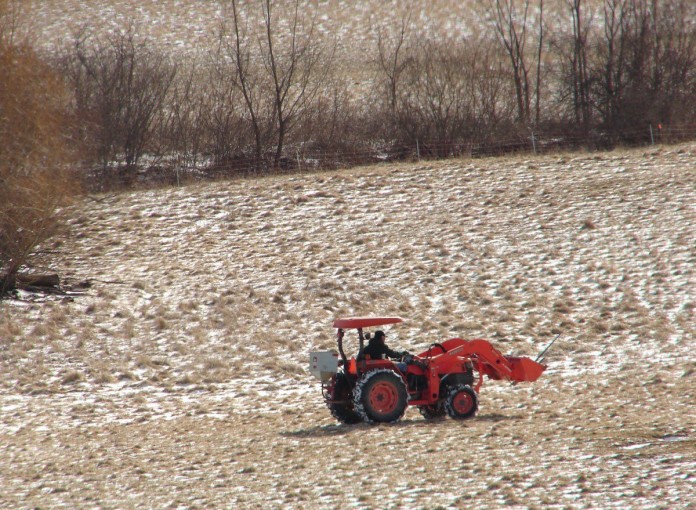Frost seeding of legumes in February and early March can be used to improve pasture, hay quality and yield. Red and white clover are the most frequently utilized legumes in frost seeding.
The freezing and thawing of late winter and early spring can provide good legume seed to soil contact and germination.
The following steps will help to ensure frost seeding success.
Site selection
Choose a pasture that has been closely grazed, as a thin sod will likely reduce competition and allow for seed to soil contact. Legumes do best in well-drained areas, and a southeasterly facing slope will receive more sunlight and favor legume growth.
Animals may be utilized to help trample seed in for better soil contact. However, to allow forage plants a chance to establish a strong root system, remove them when seed germination occurs in the spring and keep them off these fields for four weeks after germination.
Fertility
Soil pH should be approximately 6.0 or above. A soil test should have been taken, and if needed, phosphate and potash can be broadcast when soil conditions allow. Soil test kits are available at your local Ohio State University extension office.
Inoculate legume seeds
If the legume plant being seeded does not currently exist in the field, inoculate the legume seed with the appropriate strains of nitrogen-fixing bacteria. Remember inoculants should be stored in a refrigerator from the time of purchase to use. The rhizobia bacteria can be killed at high temperatures. Also, check the expiration date on the inoculate package.
Some legume seed is sold with a coating of inoculate already administered to the seed. Be sure to purchase certified weed-free seed that is no more than 1 year old.
Grazing management
Allow newly seeded legume plants to grow. Do not overgraze newly seeded plants just after germination. Manage grass height so as to allow sunlight to reach clover plants.
Clover and other legumes are often the preferred forage species of grazing animals. For this reason, rest periods between grazing may need to be adjusted to allow for adequate legume regrowth.
Use nitrogen in small and split applications when fields contain legumes, as excess nitrogen will likely cause grass to overcrowd and out-compete legume plants. A pasture or hayfield composed of 35% or more legume needs no additional nitrogen.
Below are some legume species and seeding options:
- Red clover 6-8 pounds/A and birdsfoot trefoil 3-4 pounds/A This combination provides good legume compatibility for cattle.
- Red clover 6-8 pounds/A and Ladino clover 2-3 pounds/A This combination will support grazing for goats, sheep and cattle.
Horse owners who have experienced cases of slobbers should not frost seed clovers. Perennial grasses do not germinate as well as legumes when broadcast.
Grass establishment is best accomplished when drilled directly into the sod. Changing pasture composition requires changing pasture management.













